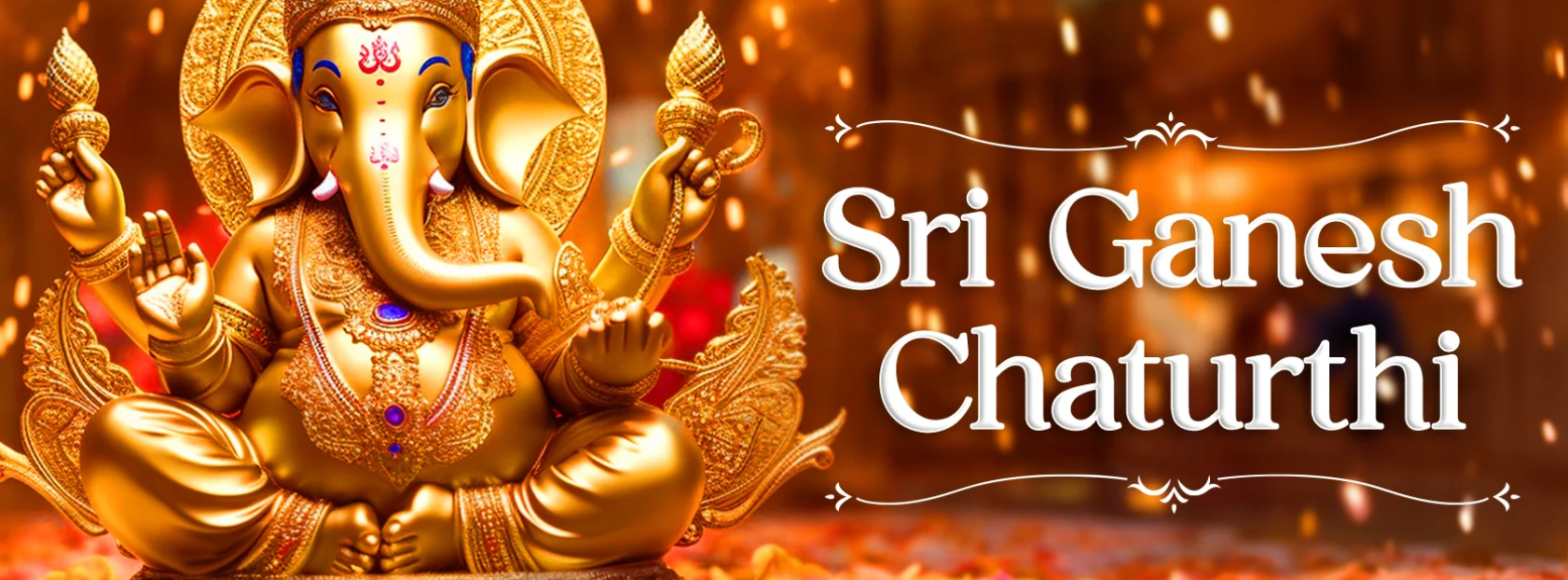Ganesh Chaturthi (Vinayaka Chaviti, Ganesh Utsav, Vinayaka Chaturthi)
Ganesh Chaturthi, also known as Vinayaka Chaturthi, is a joyful Hindu celebration that honours the birth of Lord Ganesha, the elephant-headed god of wisdom, prosperity, and fortune. The celebration, which is marked by elaborate ceremonies, begins with the installation of Ganesha idols in homes and public pandals (temporary stages), followed by prayers, Vedic hymn singing, and other cultural activities. Devotees present delicacies such as modaks, which are thought to be Ganesha’s favourite, as well as aarti (a light-based religious celebration). The event finishes with the immersion of the idols in bodies of water, representing Ganesha’s return to his heavenly dwelling, and is accompanied by spectacular processions, music, and dance. Ganesh Chaturthi promotes communal spirit and dedication, bringing people together in joyful celebration.
When is Ganesh Chaturthi in 2024
Ganesh Chaturthi will be held on Friday, September 6, 2024. This Hindu festival celebrates the birth of Lord Ganesha, the deity of intelligence, prosperity, and good fortune. The festivals usually last ten days, culminating in Ganesh Visarjan on Anant Chaturdashi, when the idols are immersed in water.
About Ganesh Murti
Ganesha is a Hindu god with an elephant head and a human body. He is the son of Shiva, the lord of destruction, and Parvati, and a brother of Karthikeya, the god of war. Lord Ganesha, also known as Ganapati, Vinayaka, and Pillaiyar, is one of Hinduism’s most beloved deities. He is highly revered as the remover of impediments, the patron of the arts and sciences, and the god of knowledge and wisdom. His unique elephant-headed shape is well-known and revered around the world.
History of Ganesh Chaturthi (Vinayaka Chaviti)
Ganesh Chaturthi, an annual Hindu festival, honors the birth of Lord Ganesha, the elephant-headed deity of wisdom and prosperity. It began in the 17th century during the Maratha Empire and gained great appeal in the late nineteenth century as a result of Lokmanya Tilak’s efforts to turn it into a public event to encourage unity and nationalism in opposition to British authority. The event consists of installing Ganesha idols, performing rituals, offering prayers, and culminating with the immersion of idols in water bodies, which represents the cycle of life and nature.
According to Hindu mythology, Goddess Parvati created Ganesha from sandalwood paste to safeguard her privacy while bathing. When Lord Shiva returned but was denied admission by Ganesha, they fought, and Shiva severed Ganesha’s head. When Shiva recognized Ganesha was Parvati’s son, he gave him new life by replacing his head with that of an elephant, establishing him as the leader of his forces and a popular deity.
Ganesh Chaturthi is widely celebrated in Maharashtra, Goa, Gujarat, Karnataka, and parts of Tamil Nadu, India. It has also garnered global popularity, particularly in nations with strong Hindu populations. In recent years, there has been a greater emphasis on environmentally friendly celebrations, with clay idols and natural materials substituting non-biodegradable elements to reduce environmental damage.
Rituals of Ganesh Chaturthi (Ganesh Puja Vidhi)
Puja Preparations Vinayaka Chaturthi
Cleaning and Decoration: Clean the area where the puja will be performed and decorate it with flowers, lights, and vibrant rangoli (colourful powder designs).
Eco Friendly Ganesha: A clay statue of Lord Ganesha is taken home or placed in a pandal. The idol is set on a decorative platform.
Pran Pratishtha
This festival involves chanting mantras and hymns to bring the idol to life. Typically, a priest performs this ceremony in public pandals.
Shodashopachara (16 Ways of Worship)
Aavahana (Invocation): Invites Lord Ganesha to the pooja.
Asana (Offering Seat): Providing a seat for the deity.
Padya (Washing Feet): Ganesha’s feet are symbolically washed with water.
Arghya (Offering): Providing water to Ganesha.
Achamana (Purification): Offering water for drinking.
Madhuparka (Honey and Milk): A combination of honey and milk.
Snana (Bathing): Historically bathing the idol in water and panchamrit.
Vastra (Clothing) is the process of dressing the deity in new clothes.
Yajnopavita (Sacred Thread): Giving the sacred thread.
Gandha (Sandalwood Paste): Using sandalwood paste on the idol.
Pushpa (Flowers): Offering flowers.
Dhoop (incense): The act of offering incense.
Deepa (Lamp): Presents a lamp.
Naivedya (Food Offering): Provides sweets, fruits, and other food things.
Tambula (Betel Leaves): Providing betel leaves and nuts.
Aarti: Performing aarti with burning camphor while chanting hymns.
Puja and Aarti
- Daily puja and aarti are held, which include the recitation of Ganesh Atharvashirsha, Ganesh Upanishad, and other scriptures.
- Devotees participate in the aarti by waving lamps in front of the idol and singing songs.
Eco Friendly Ganpati
In recent years, there has been an increased emphasis on eco-friendly celebrations, with clay ganesha painted in natural colors to reduce environmental effects.
Explore Our Ganpati Puja Samagri
Giri offers a wide collection of Ganpati Puja necessities. From elaborately crafted idols and traditional puja items to eco-friendly alternatives and personalized services, we cover all aspects of your spiritual journey. With our excellent techniques, you may embrace tradition and joyfully celebrate Ganesh Chaturthi and other auspicious festivals.

